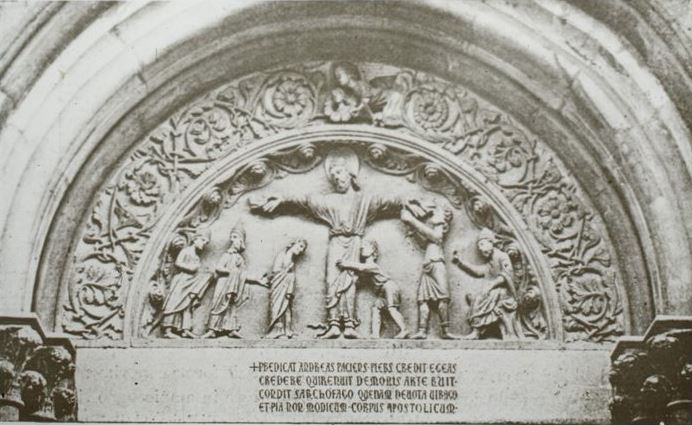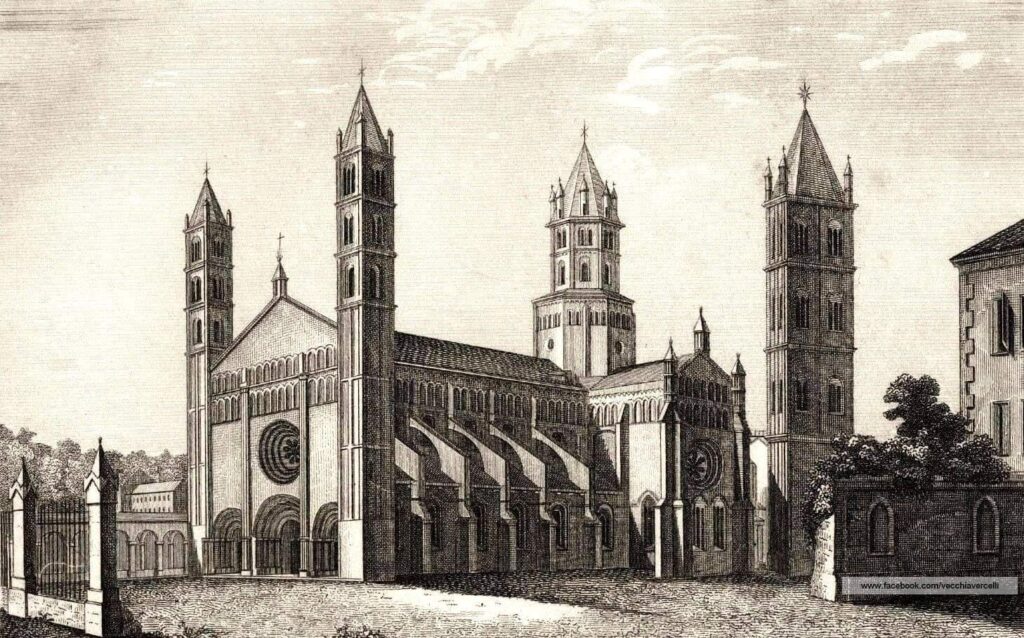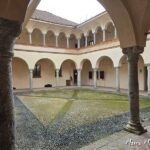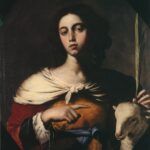
In the shadow of the magnificent Basilica of Sant’Andrea in Vercelli, an architectural jewel that has spanned eight centuries of history, lies a stone and faith enigma. The lunette above the central doorway, adorned with a rim evoking eternity through its intricate vine motifs, reveals itself as a narrative page attributed to the workshop of Antelami. Here, stone transforms into parchment, wedges into letters, and each carved figure tells a tale.
Three faithful, depicted with a vibrancy of detail that touches the soul, wait on the left. A young man with bold features, a wise-looking bearded man, and a woman, whose veil whispers of modesty and devotion, are the silent spectators of a divine drama. At the center, the cross stands not as a commonly recognized instrument of death, but as a question mark carved in time: Saint Andrew is bound to it, his figure sculpted with such mastery that it seems almost animated by a pained breath.
In this scene, where marble mimics life, two figures flank the cross, witnesses to the saint’s sacrifice. And there, in the realm of the right side, stands the imposing figure of Egeas, the proconsul, whose authority is made tangible by his majestic pose on a period chair.
Above, almost guarding the heavenly epilogue of this earthly tragedy, an angel holds a crown, a symbol of triumph and ascension, ready to guide Saint Andrew’s soul towards the empyrean. However, it is the inscription, engraved with reverential precision on the architrave, that unequivocally reveals the nature of this episode: the martyrdom of the saint as epitaph and confession.
Theories surrounding the veracity of the scene, with whispers of a possible Deposition of Christ or a tribute to the three Magi, are quieted by a careful reading of the iconography: the saint’s wrists, bound by ropes rather than pierced by nails, speak of a truth that unravels beyond legend, weaving the golden thread of tradition that favors an extended martyrdom, a test of faith that stretches over time.
The interpretation is further solidified by the figures populating the scene: on the left, the people who drink from Andrew’s words, and on the right, men torn between the desire to free him and accepting his final wishes. And then there’s Maximilla, the proconsul’s wife, portrayed in a gesture of veneration and pity that foreshadows her choice to honor the saint’s body with a worthy burial.
In this work, the Basilica of Sant’Andrea in Vercelli transcends being merely a container of art; it becomes a narrator, a silent interpreter offering its visitors not just an immersion in history, but a dialogue with eternity. The lunette, with its load of symbols and meanings, invites a journey beyond the visible, towards a deeper understanding of art, faith, and humanity woven through time.












